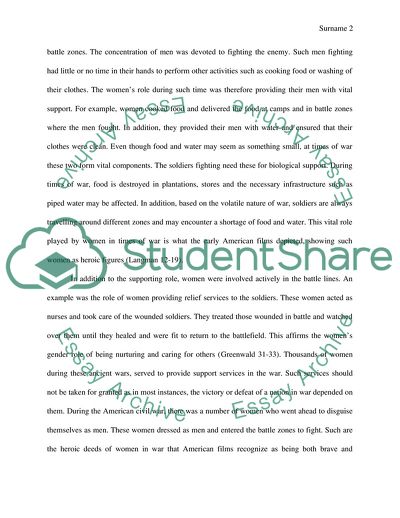Cite this document
(Gender and War in Early American Films Essay Example | Topics and Well Written Essays - 1750 words, n.d.)
Gender and War in Early American Films Essay Example | Topics and Well Written Essays - 1750 words. https://studentshare.org/visual-arts-film-studies/1806534-address-the-absence-and-presence-of-the-women-in-american-war-film-from-1898-to-1927
Gender and War in Early American Films Essay Example | Topics and Well Written Essays - 1750 words. https://studentshare.org/visual-arts-film-studies/1806534-address-the-absence-and-presence-of-the-women-in-american-war-film-from-1898-to-1927
(Gender and War in Early American Films Essay Example | Topics and Well Written Essays - 1750 Words)
Gender and War in Early American Films Essay Example | Topics and Well Written Essays - 1750 Words. https://studentshare.org/visual-arts-film-studies/1806534-address-the-absence-and-presence-of-the-women-in-american-war-film-from-1898-to-1927.
Gender and War in Early American Films Essay Example | Topics and Well Written Essays - 1750 Words. https://studentshare.org/visual-arts-film-studies/1806534-address-the-absence-and-presence-of-the-women-in-american-war-film-from-1898-to-1927.
“Gender and War in Early American Films Essay Example | Topics and Well Written Essays - 1750 Words”. https://studentshare.org/visual-arts-film-studies/1806534-address-the-absence-and-presence-of-the-women-in-american-war-film-from-1898-to-1927.


